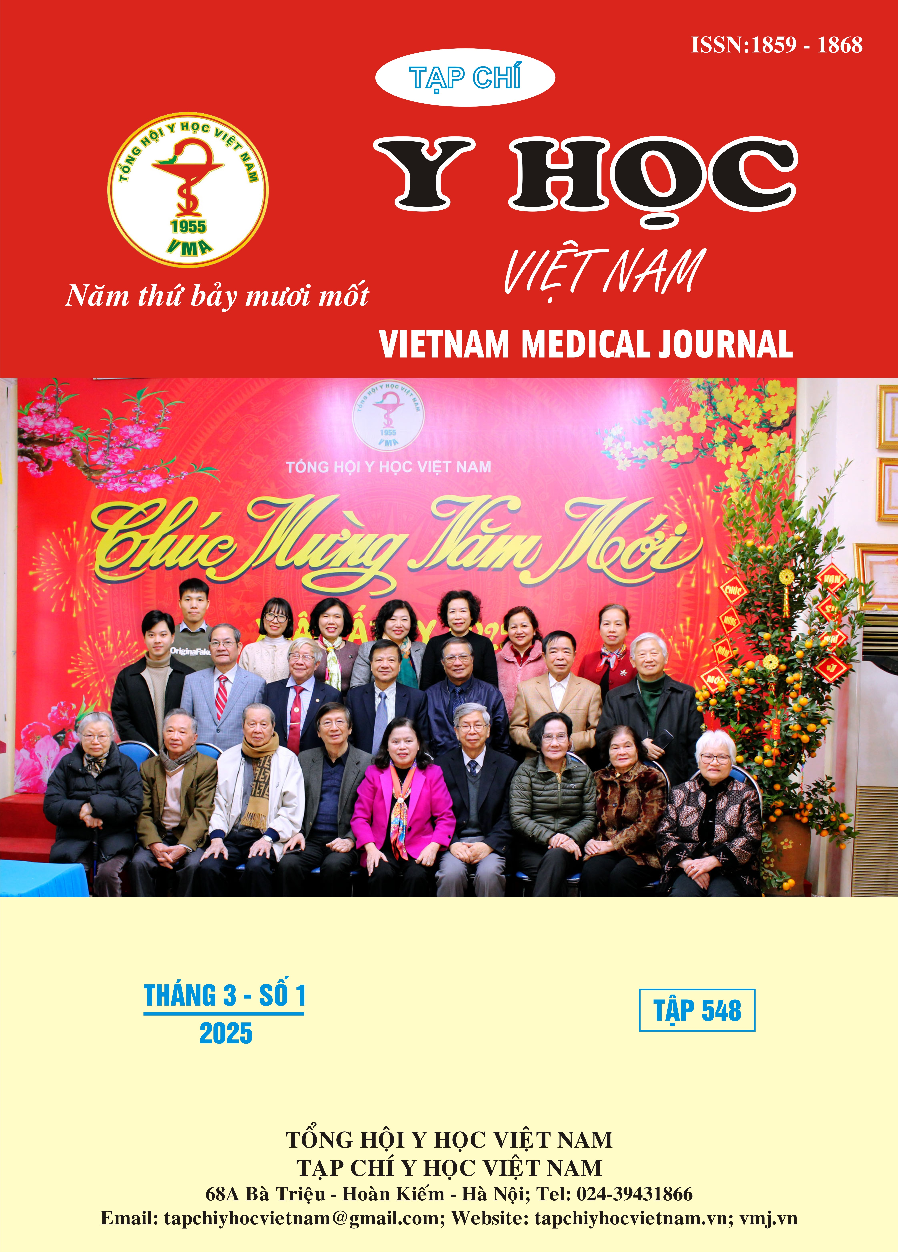CLINICAL AND PARACLINICAL FEATURES OF WOMEN WITH PRIMARY BREAST CANCER WITHOUT DISTANT METASTASIS AND NEGATIVE HORMONE RECEPTORS
Main Article Content
Abstract
Objective: Describe the clinical and paraclinical characteristics of women with primary breast cancer. Subjects and methods: A prospective descriptive study was conducted on 81 patients with primary breast cancer without distant metastasis and negative hormone receptors, who were diagnosed and treated at K Hospital and Hanoi Obstetrics and Gynecology Hospital. Results: The patients in the study were primarily between the ages of 40 and 45, with an average age of 39.23 years (± 5.00). The most common reason for seeking medical attention was self-discovery of a breast lump, which accounted for 90.1% of cases. During early-stage physical examinations, the typical findings included a single tumor measuring ≤2 cm, a mobile tumor, and the absence of skin changes or nipple discharge. Imaging diagnosis results were consistent, with ultrasound typically showing tumors of size ≤2 cm, and BIRADS classification mostly ranging from 4 to 5. Additionally, the rate of HER2 positive among the patients was 55.1%, which is higher than the general population rate. The majority of patients (96.1%) fell into the high Ki67 group, indicating rapid proliferation associated with the hormone receptor-negative sub-type of the disease. Conclusion: Primary breast cancer without distant metastasis and negative hormone receptors exhibits distinct clinical and paraclinical characteristics. Most patients tend to be women over the age of 40. In this study, many patients were diagnosed early and did not present with severe clinical symptoms or significant imaging findings. However, the hormone receptor-negative sub-type is considered more severe due to its rapid cell division and high potential for metastasis, as indicated by a majority of patients having a high Ki67 proliferation rate.
Article Details
Keywords
Primary breast cancer, hormone receptor-negative, TNBC, Triple negative
References
2. Osborne CK. Steroid hormone receptors in breast cancer management. Breast Cancer Res Treat. 1998;51(3):227-238. doi:10.1023/A: 1006132427948
3. Nguyễn Thị Huyền (2013), “Nghiên cứu một số đặc điểm lâm sàng, mô bệnh học và kết quả điều trị bệnh ung thư vú ở phụ nữ dưới 35 tuổi tại Bệnh viện K”, Luận văn tốt nghiệp bác sĩ chuyên khoa II, Đại học Y Hà Nội, pp.
4. Krishnamurti U, Silverman JF. HER2 in Breast Cancer: A Review and Update. Adv Anat Pathol. 2014; 21(2):100. doi:10.1097/PAP. 0000000000000015
5. Yerushalmi R, Woods R, Ravdin PM, Hayes MM, Gelmon KA. Ki67 in breast cancer: prognostic and predictive potential. Lancet Oncol. 2010;11(2): 174-183. doi:10.1016/S1470-2045(09)70262-1


